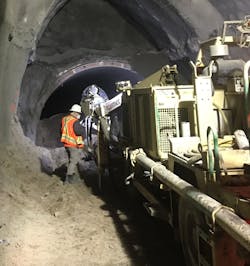Study Says Certain Construction Jobs Worse Than Others for Silica Dust
Certain jobs may expose construction workers to silica dust at levels more than 10 times the permissible exposure limit set by OSHA, according to the results of a recent study detailed in the National Safety Council’s Safety + Health magazine.
Researchers from the Department of Public Health at the University of Massachusetts Lowell collected 51 personal breathing-zone samples from workers at demolition, crushing, and bridge repair sites in Massachusetts.
Comparison samples were taken at sites that had dust suppression controls and those that did not, when possible.
Workers performing concrete chipping at substructure bridge repair sites had the highest level of respirable crystalline silica exposure, a time-weighted average of 527 micrograms per cubic meter of air. That is more than 10 times the PEL of 50 micrograms per cubic meter that OSHA established in its most recent silica regulation (1926.1153).
Workers operating crushing machine tenders had a respirable crystalline silica exposure of 93.3 micrograms per cubic meter. Operating engineers and laborers had the lowest exposure, a time-weighted average of 17 micrograms per cubic meter.
“Even with the use of dust suppression controls, respiratory protection may be required for various tasks,” the researchers said. They recommend that employers provide additional respiratory safeguards for these workers, Safety + Health reported.
Crystalline silica is a carcinogen found in sand, stone, and artificial stone. Exposure to silica dust can trigger silicosis, a chronic disease that involves scarring of the lungs. OSHA estimates that 2 million construction workers are exposed to the dust.
The study had been previously published online in the Annals of Work Exposures and Health.





